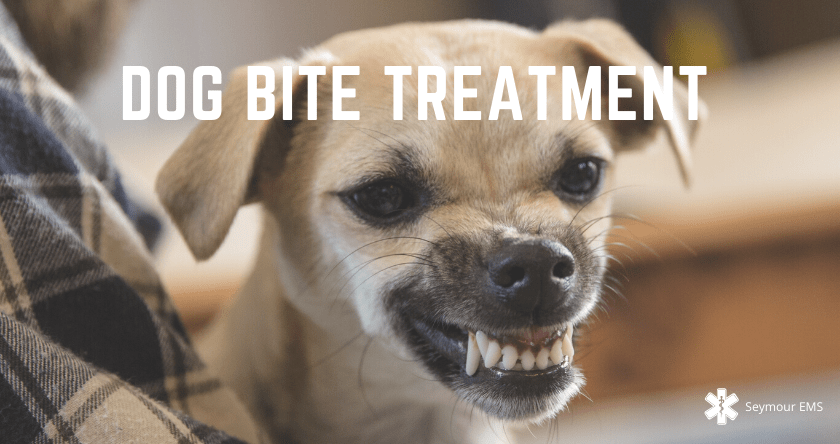What should you do if you were bitten by a dog: You will discover 7 essential steps for dog bite treatment in this article.
Even though dogs are considered our best friends, they are still animals that can bite. According to the statistics, canines bite about 4.7 million Americans every year, including children aged 5-9. One of five bites is so serious that it requires medical attention.
Dog Bite Treatment
Depending on the seriousness of a dog bite wound, there are certain things that you should do to prevent infection. Here are seven steps we recommend you to take if you were bitten by a dog:
1. See a doctor
Even though it is possible to provide first aid at home, it is still recommended to see a doctor as soon as possible. Seeing a doctor is especially important for deep wounds, or if you noticed signs of infection, such as swelling, redness, pus, warmth, and others. If you were bitten by an unfamiliar dog or you cannot stop bleeding, we highly recommend you to go to one of the clinics open 24 hours that specializes in emergency medicine.
2. Wash your wound thoroughly
If you decided to do the treatment at home, the very first thing you should do is to wash the wound with soap and water.
3. Stop or slow the bleeding
Place a clean towel over the wound to stop the bleeding. Keep the towel for about 5 minutes and see if the bleeding is stopped through direct pressure. Again, if it does not help, then you need to go to an emergency room.
4. Apply an antibiotic ointment
Wait until the wound is completely dry and apply ointment. It will help to kill bacteria and prevent the development of infection. The most effective are Bacitracin and Neosporin. Make sure you sterilize your hands with rubbing alcohol before putting antibiotic cream on the wound.
5. Apply a sterile bandage
Cover the wound with a sterile bandage. If the wound is too long or there are several wounds in a row, it is better to use medical tape or gauze instead.
6. Change the bandage regularly
Make sure you change the bandage at least a few times a day. Keep monitoring the wound, and if it is no longer seeping fluid or blood, you can remove the bandage. By leaving the wound open, you help it to heal faster. However, even after removing the bandage, you still need to clean it every day. Do not forget to apply an antibiotic cream after each cleaning.
7. Keep monitoring the wound
Pay close attention to the dog bite as it heals. Since dogs have a lot of bacteria in their saliva, there is a high risk of infection, especially if your immune system is not strong enough. If you notice swelling or redness, or you have a fever and feel weak, you should see a doctor.
Even if your wound looks fine, you still should talk to your doctor, to discuss whether you need a tetanus shot (especially if you have not had any within the last 10 years). The doctor might also prescribe antibiotics if the wound is not healing fast enough.
Also, before providing first aid at home, it is highly recommended to complete first aid training.
It is also important to know that you can get rabies from the dog that bit you, but you will not have any symptoms until one month passes (incubation period). To find out whether the dog has rabies, you should contact animal control.
Animal bites might be dangerous. Sometimes dog bites are small and heal very fast, while others require a special dog bite treatment. Puncture wounds also might be so deep that plastic surgery is needed. It is always better to prevent a bite, but if it has already happened, you know what exactly you should do.


Recent Comments